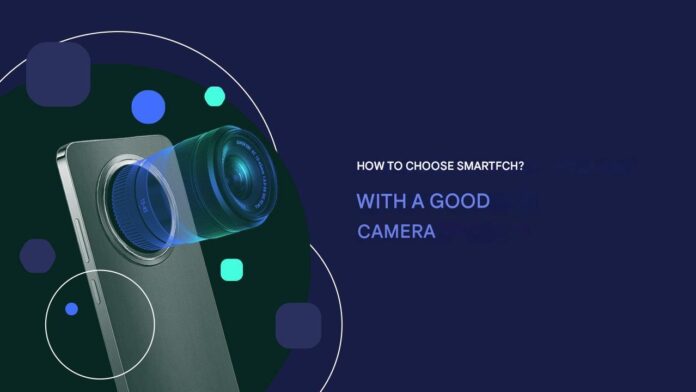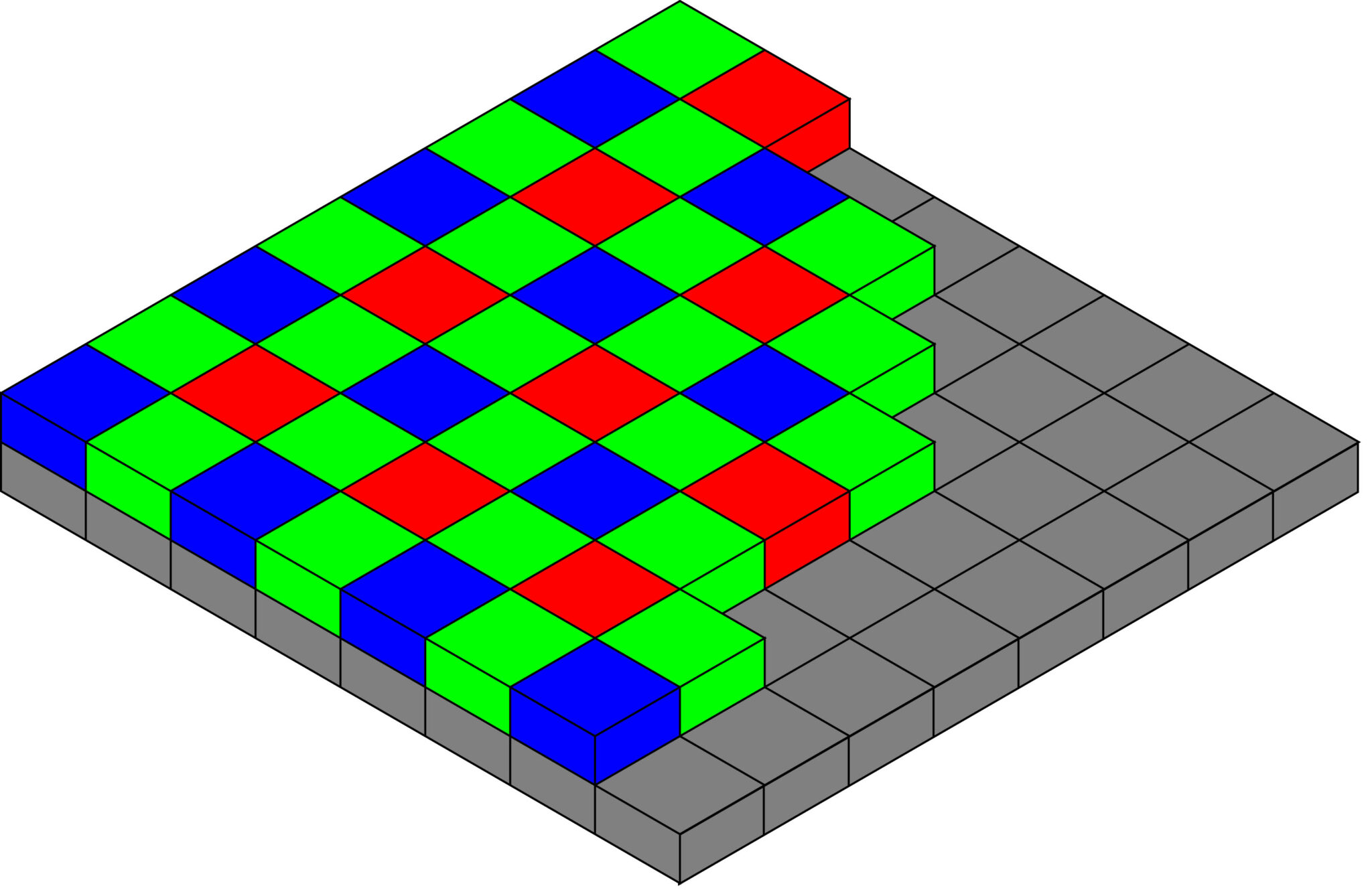Camera phone manufacturers have been racing for years with the main question: “Who is better?” Who will equip the new model with a larger matrix, who will have more pixels on this matrix, whose zoom will surpass the competitors?
In this article, the Qiuk team will tell you how to choose a smartphone with a good camera in 2024, what is most important to pay attention to. Let’s start in order.
Previously, the quality of mobile photos was directly related to the number of megapixels: the more of them, the better the camera was considered. However, modern flagship smartphones are equipped with sensors, for example, 12 MP, which in terms of shooting quality compete with 108 MP cameras. Now a lot depends not on megapixels, but on software processing algorithms, the size of the matrix and the aperture of the lens.
A pixel is a basic element of the camera matrix that determines the resolution of the image. The number of megapixels indicated in the characteristics (for example, 5, 8, 12, 108 MP) is calculated by multiplying the number of pixels by the length and width of the matrix. It is important to remember that one megapixel is equal to a million pixels.
High resolution is justified if you need to leave some space for cropping. To crop a photo without losing quality, 7-8 MP is enough. If you need to select only a small fragment of the photo, cameras with a higher resolution will come in handy, although such situations do not occur often.
Another case where high resolution matters is printing photos, especially in large format. However, most users rarely print photos, especially those taken on a smartphone. For social networks, a resolution of 2-4 MP is usually enough, especially since the platforms themselves compress the uploaded images. Therefore, ultra-high resolution is often excessive.
Matrix size
Due to the compact size of smartphones, it is impossible to install full-frame matrices (36×24 mm) in them. Therefore, so-called “cropped” matrices are used in such devices, that is, matrices of a smaller size.
The smaller the size of the matrix, the less light it can capture. And photography, in its essence, is based on the effect of light on a light-sensitive material – be it metal and glass plates, special photo paper, film or digital sensors. If the light-sensitive element receives little light, the photo will be less detailed.
The matrix size is indicated by a fractional value in inches, for example, 1 / x: 1/3, 1 / 1.28, etc. The smaller the denominator value, the larger the matrix size. This means that it can create higher quality and more detailed photos. Such large matrices are installed mainly in modern flagship smartphones.
Pixel size and binning
The pixel size depends on the matrix size and the sensor resolution. In modern cameras, this figure varies from 0.6 to 2 µm, which is explained by the difference in technologies. Image sensors are divided into two main categories: with pixel binning (pixel merging) and without it.
The first category most often includes sensors with a resolution of over 25 MP, the second, accordingly, includes sensors with a resolution of up to 25 MP. Smartphones with “honest” sensors shoot at the declared resolution, and the size of their pixels, as a rule, is 1 µm or more. Thanks to this, such cameras cope well with shooting in the dark, since large pixels capture more light. With sufficient lighting, the quality of the pictures is even higher, but the resolution remains unchanged, and the detail potential is limited. It was the need to extract more detail at high resolution and good lighting that led to the development of binning technology.
The photo matrix sensor consists of pixels of three colors: red, green and blue. These pixels are not randomly arranged, but rather in a pattern called a Bayer grid. In this pattern, the pixels form squares: two green (in the upper left and lower right corners), one red (in the upper right corner), and one blue (in the lower left corner).
The most commonly used binning is 2×2, which combines four matrix dots to form one pixel. However, there are already sensors with more advanced technologies, such as 3×3 binning, which combines nine dots. Sensors with the 4×4 formula, which combine sixteen dots, are also on the way.
There is an important feature: the resolution of the final images decreases proportionally to the number of dots combined to create one pixel. For example, a 48 MP sensor in binning mode produces images with a resolution of 12 MP, and a 64 MP sensor – 16 MP. For a 108 MP matrix with 3×3 binning, the final resolution is reduced to 12 MP. However, this does not necessarily mean that the binning mode must be used – most smartphones allow you to manually switch to full resolution. However, this mode is only effective in good lighting conditions.
Thus, sensors with binning strive to combine the two approaches. In bright light, you can shoot at full resolution for maximum detail. And in low light, dot binning helps minimize noise and improve image quality.
However, on a small sensor, pixel binning cannot significantly improve the quality of images, since the capabilities of the sensor are limited by its size.
Lens aperture
When choosing a smartphone, it is worth paying attention to the model with the highest aperture matrix. The larger the aperture (designated as f/x, where f is the focal length and x is the diameter of the entrance pupil of the lens), the less noise in the pictures and the less critical the lighting becomes. Usually, the highest aperture lens is installed on the main camera, while additional modules often have a smaller aperture. The f/x value indicates quality: the smaller the x, the better, for example, f/1.8 will be preferable to f/3.
Flagship smartphones can be equipped with lenses with variable aperture, which allows you to flexibly adjust the shooting parameters for different lighting conditions.
Camera lenses
Most modern smartphones are equipped with a main camera with three sensors, which provides a number of advantages over using a single lens, since each sensor has its own specialization.
- The standard lens with a normal focal length is versatile and suitable for most shooting scenarios, including portraits and everyday photography. It is the main module of the camera, which is used by default and is equipped with key features such as optical image stabilization (OIS), autofocus, and more.
- The ultra-wide-angle lens provides a wider field of view. It is great for landscapes and group photos. However, due to the savings on optics in such modules, manufacturers often sacrifice quality: problems with color rendering and image detail may arise.
- A telephoto lens is a camera module with a narrow angle of view that provides the ability to optically zoom in on an image, which is useful for shooting objects at a distance or creating close-ups without losing image quality.
- A macro lens, designed for shooting at very close range, usually has a low resolution (for example, 2 MP) and often lacks such important functions as autofocus or stabilization. For macro photography, it is often more effective to use the main sensor with subsequent cropping, so the presence of a separate macro lens in a smartphone is not an important selection criterion.
- There are also additional sensors that complement the main camera. For example, a depth sensor helps create a background blur effect (bokeh) by analyzing the depth of the frame. Sometimes you can find a monochrome lens that improves the quality of shooting in low light, working in tandem with the main sensor.
Stabilization
Stabilization certainly plays a key role – it allows you to significantly reduce the likelihood of image blur and get more clear shots. The same applies to video shooting – stabilization helps to get smooth video without sudden movements.
There are two types of stabilization: optical and electronic.
- Optical stabilization (OIS) is more common in flagship models and good “mid-range” models. In this case, the camera module is not rigidly fixed in the case, but is held by magnets. They receive data from the smartphone’s accelerometer and adjust the position of the sensor, compensating for device movements;
- Electronic image stabilization (EIS) works by using part of the sensor’s resolution to process the image. This can result in slightly lower resolution images. While EIS doesn’t completely eliminate blur or shake, it can provide noticeable improvements when done well.
In some flagship smartphones, both types of stabilization work together, which allows you to achieve the most stable and clear photos and videos.
Zoom
When choosing a smartphone with a good camera, many people look for a model that can take good pictures at long distances. For this, zoom is used – optical or digital zoom. If it is important to get high-quality pictures when shooting distant objects or close-ups, you should pay attention to the presence of optical zoom. Its advantage is that it provides magnification by changing the focal length of the lens, while maintaining high image quality.
Optical zoom is based on a system of lenses that move to change the focal length. This allows you to enlarge the image without losing detail or reducing the resolution. Light is focused on a larger area of the sensor, which makes it possible to convey all the nuances of the subject. The magnitude of optical zoom in smartphones varies depending on the model and manufacturer, usually ranging from 2x to 10x.
In contrast, digital zoom is implemented programmatically: part of the image is cropped and scaled, which leads to a loss of quality and a decrease in detail.
Some modern smartphones offer zoom up to 50x, 100x or even 200x using what is called hybrid zoom, which combines optical and digital zoom. However, the image quality at such extreme magnifications often leaves much to be desired. Nevertheless, hybrid zoom allows you to see objects that would otherwise remain unnoticed.
Software processing
Software processing significantly affects the quality of the final image, improving it or, on the contrary, reducing it. Two key factors are important here: the capabilities of the image signal processor (ISP) built into the smartphone SoC and the algorithms of the camera software used on a particular device. The final quality of the photos depends on how effectively these components work together. Smartphones with more advanced software often provide better shooting quality, even if they use the same sensors as competitors. In addition, many modern smartphones use AI image editing algorithms.
Examples of smartphones with a good camera in 2024
Conclusion
The quality of smartphone shooting is determined by many factors, and the matrix resolution is far from the first place here. The key role is played by the size of the pixels, the aperture ratio of the lens and software image processing.
Additional camera sensors expand the shooting capabilities, offering various modes, but they have a minimal effect on the quality of the photos. Therefore, when choosing a camera phone, you should first evaluate the quality of shooting with the main module.
Technical characteristics can tell a lot about the capabilities of the camera, but their implementation largely depends on the software. To get a complete picture of the capabilities of the smartphone, it is recommended to study the reviews on it.









